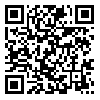







































BibTeX | RIS | EndNote | Medlars | ProCite | Reference Manager | RefWorks
Send citation to:
URL: http://journal.iehfs.ir/article-1-28-en.html
2- Department of Occupational Hygiene, Hamadan University of Medical Sciences- Hamadan, Iran.
3- Ergonomics Department, School of Health and Research Center for Health Sciences, Hamadan University of Medical Sciences, Hamadan, Iran.
Introduction: Musculoskeletal disorders are amongst dominant occupational injuries and disabilities in developed and developing countries. The RULA technique is one of the best methods for assessing upper limbs postures. The purpose of this study was to investigate the working postures using RULA and ergonomic interventions in the quality control unit of a glass manufacturing company.
Material and Methods: This interventional study was conducted in the mirror control workstations of a glass manufacturing company. To assess workers’ postures, the RULA technique was applied before and after the intervention. After data analysis, corrective engineering measures were recommended and implemented in all workstations.
Results: The findings showed that 40% of workers had a grand score of 7, 40% with a grand score of 6 and 20% with a grand score of 5. Accordingly, 60% of workstations were in action level of 3 (i.e. investigation and changes are required soon) and 40% of workstations were in action level of 4 (i. e. investigation and changes are required immediately). After intervention, 20% of workstations were in action level of 3 and 80% were in action level of 2.
Conclusion: To prevent musculoskeletal disorders, increase work efficiency and improve workforce health, with positive interaction of research team and remarkable cooperation of company management, engineering interventions were designed and implemented at all workstations and the risk level was reduced efficiently.Received: 2013/09/16 | Accepted: 2013/09/16 | ePublished: 2013/09/23
| Rights and permissions | |
 |
This work is licensed under a Creative Commons Attribution-NonCommercial 4.0 International License. |






